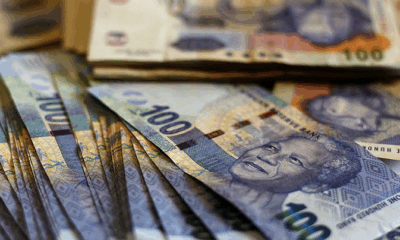Business
No Relief Yet: South Africa’s Interest Rates Keep Borrowers Under Pressure

Interest Rate Relief Still Out of Reach for South Africans
South Africans hoping for lower bond and car repayments will need to keep tightening their belts. According to Absa’s senior economist Miyelani Maluleke, meaningful interest rate cuts are unlikely before 2027. For households already struggling with mortgages, vehicle loans, and other forms of debt, the message is clear: the pressure is not going away any time soon.
Why rates are stuck
Although inflation dipped to 3% in July, Absa expects it to remain stubborn, averaging nearly 4% in 2026 before settling at 3.5% in 2027. This outlook is higher than the Reserve Bank’s own projections, which are slightly more optimistic. The central bank has also taken a bold step by formally adopting 3% as its new inflation anchor, moving away from the previous 4.5% midpoint.
Maluleke explained that while this change will help anchor expectations over time, the reality is that inflation is proving harder to tame than policymakers had hoped. As a result, Absa only sees gradual relief, pencilling in small cuts from 2027 onward. For now, the repo rate sits at 7%, leaving the prime lending rate at 10.5% and leaving borrowers with little breathing space.
The counter-argument
Not everyone agrees with this restrictive stance. Economist Roelof Botha has strongly criticised the Reserve Bank’s obsession with forcing inflation down to 3%. He argues that South Africa’s structural realities make this target unrealistic. Factors such as distance from global markets, higher import costs, exchange rate volatility, and external shocks will always keep our inflation slightly higher than that of developed economies.
Botha also points to events beyond any central bank’s control: shipping rates soared after Covid, and oil prices spiked during the Russia-Ukraine conflict. These global shocks, he says, cannot be solved by hiking local interest rates. In fact, he believes the Reserve Bank’s approach has worsened unemployment by pushing rates to a 15-year high in an already weak economy.
What it means for households
For ordinary South Africans, the effect is simple: home and car loans remain expensive. The Altron Fintech Household Resilience Index shows households adapting, with resilience rising faster than GDP growth. However, this resilience may not last, as part of it has been driven by people dipping into retirement savings through the new two-pot system.
Botha argues that growth and job creation should be prioritised over narrow inflation targets. He suggests a prime rate closer to 7%, in line with the inflation rate, would have been more appropriate. That would have left households with far lighter debt burdens.
The bigger picture
The debate reveals two competing economic visions: one focused on long-term inflation stability and another urging immediate relief to stimulate growth and jobs. While economists debate, South Africans continue to feel the pinch of expensive credit. For those paying off bonds and cars, the wait for genuine relief could stretch into the latter half of the decade.
Also read: Greylisting Isn’t the Only Test for South Africa’s Financial System
Follow Joburg ETC on Facebook, Twitter, TikT
For more News in Johannesburg, visit joburgetc.com
Source: Business Tech
Featured Image: Dornob



























